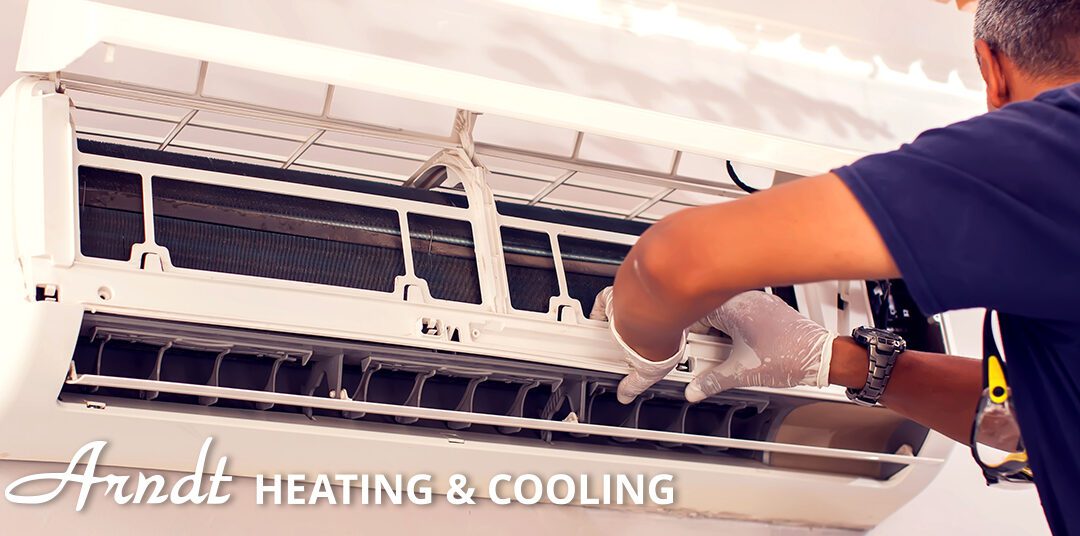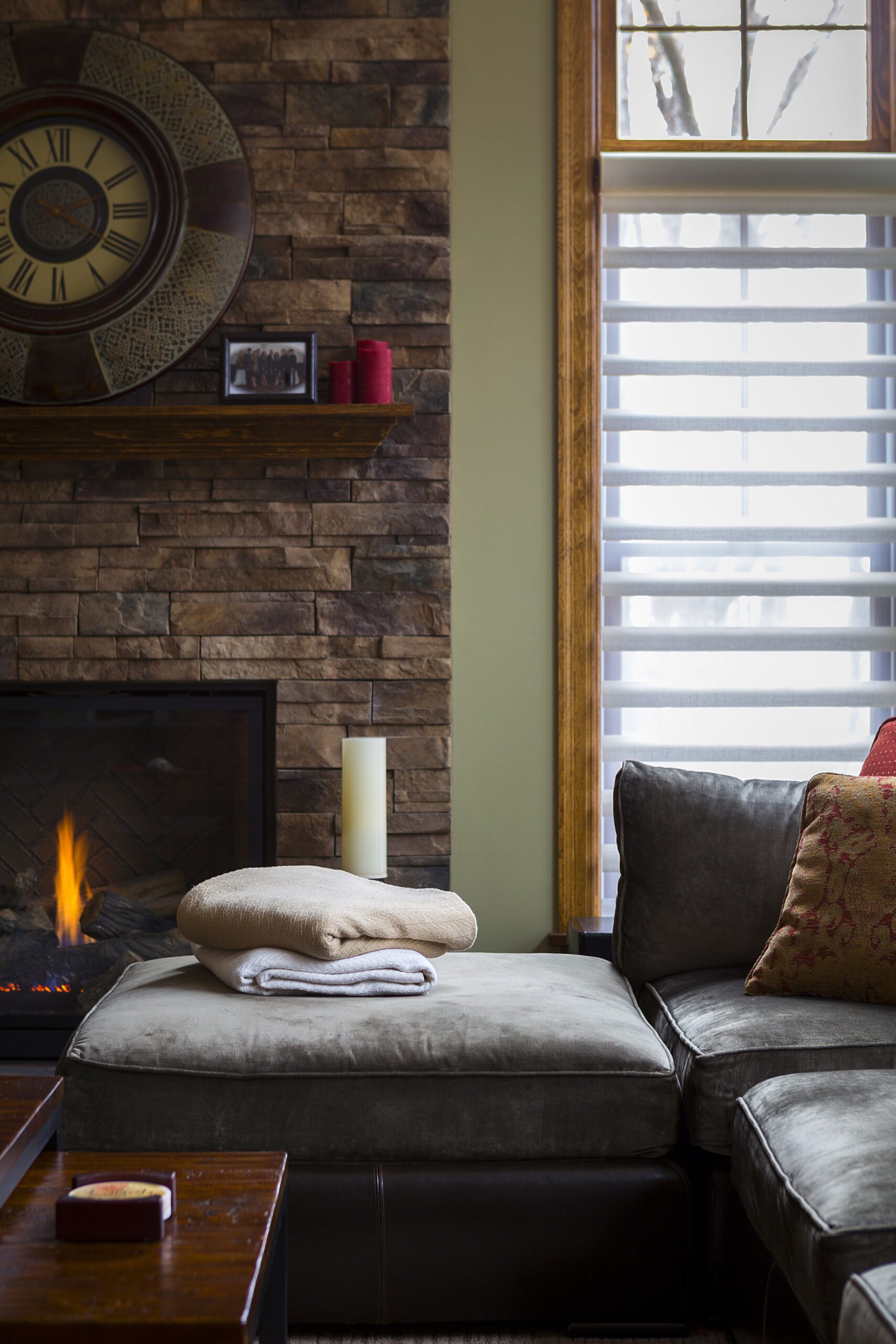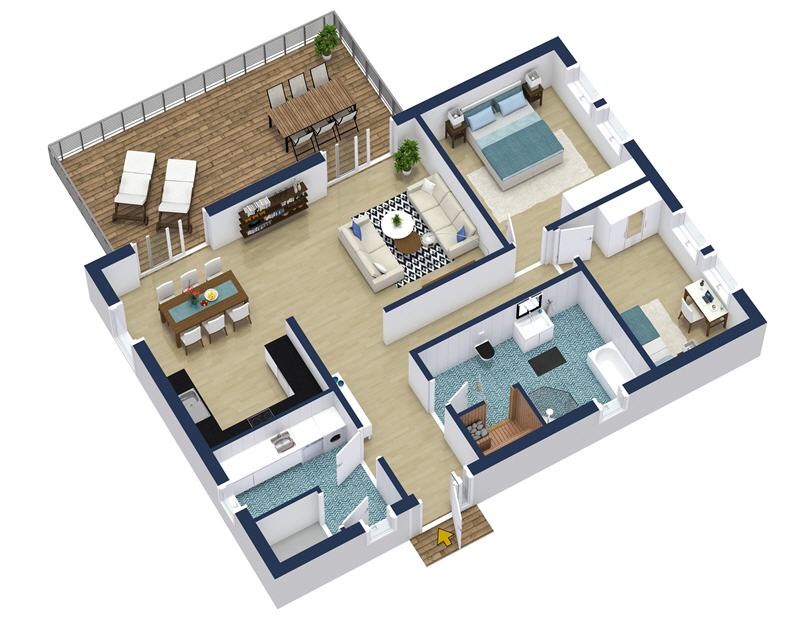
Common Types of Air Conditioning Systems
Air conditioning plays a vital role in maintaining comfortable living and working environments. It is widely used in homes, offices, commercial buildings, healthcare facilities, and industrial applications. Beyond comfort, air conditioning systems improve indoor air quality, enhance productivity, and protect sensitive equipment. In this article we provide insights to several A/C options. We’ve taken the time to collect the pros and cons for each of these.
Types of Air Conditioning Systems
Window Air Conditioners
Window units are a cost-effective solution for cooling small spaces and among the most common choices for home owners. Mounted in windows or wall openings with all components housed in one unit.

Pros
- Affordability – Window units are one of the most budget-friendly air conditioning options, both for initial purchase and installation.
- Ease of Installation – These systems are simple to install in most standard windows without requiring professional help or major modifications.
- Portability – While not as mobile as portable ACs, window units can be moved between windows or locations if needed.
- Energy Efficiency for Small Spaces – Designed for single rooms, they provide focused cooling, reducing energy waste.
- Compact Design – The all-in-one structure saves indoor space, as all components are housed within the unit.
- Low Maintenance – Maintenance involves simple tasks like cleaning filters and checking drainage.
- Immediate Cooling – Window air conditioners cool spaces quickly and effectively for their size.
Cons
- Limited Cooling Capacity – Suitable only for small to medium-sized rooms, making them impractical for large spaces.
- Obstructed Windows – Installation blocks the window, reducing natural light and ventilation when the unit is in place.
- Noise Levels – Window ACs can be noisier than split or central systems due to the integrated compressor.
- Aesthetic Impact – Units can detract from the appearance of a room or building exterior.
- Energy Inefficiency for Long-Term Use – While efficient for small spaces, they are less energy-efficient than larger systems when used to cool multiple areas.
- Seasonal Installation and Removal – Many users find it inconvenient to install and remove the unit with seasonal changes.
- Limited Features – Basic models may lack advanced features like smart connectivity or multi-zone control.
Summary
Window air conditioning systems are ideal for cooling individual rooms affordably and efficiently. However, they are best suited for temporary or supplemental cooling needs and may not be practical for larger spaces or users concerned about aesthetics and noise.
Portable Air Conditioners
Portable air conditioners offer the flexibility of moving cooling where it’s needed. Freestanding units with an exhaust hose vented through a window or wall.

Pros
- Portability – Easily moved from room to room, offering flexible cooling where it’s needed most.
- Ease of Installation – Requires minimal setup, typically involving connecting an exhaust hose to a window or vent.
- Compact and Self-Contained –
- All components are housed in one unit, eliminating the need for permanent installation or wall alterations.
- Affordability – Cheaper than central or split systems, making it a cost-effective choice for small spaces or temporary use.
- Supplemental Cooling – Ideal for supplementing existing systems in specific areas, like a home office or bedroom.
- Multifunctionality – Many portable units also offer heating, dehumidification, or fan-only modes, increasing their utility.
- No Permanent Modifications – Great for renters or situations where structural changes are not allowed.
Cons
- Limited Cooling Capacity – Best suited for small rooms; may struggle to cool larger spaces effectively.
- Noisier Operation – Portable ACs tend to be louder than other systems, as the compressor is located inside the room.
- Energy Inefficiency – Often less energy-efficient than window or split systems, leading to higher electricity bills.
- Requires Venting – Must be vented through a window or opening, which can limit placement options and reduce convenience.
- Takes Up Floor Space – Occupies valuable floor space, which might be inconvenient in smaller rooms.
- Regular Maintenance – Requires frequent emptying of water collection trays or ensuring proper drainage, especially in humid environments.
- Short-Term Solution – Not ideal for long-term cooling needs due to operational limitations and inefficiencies.
Summary
Portable air conditioners are a flexible and convenient option for small spaces, renters, or temporary cooling needs. However, their noise, energy consumption, and limited capacity may make them less suitable for larger spaces or continuous use.
Central Air Conditioning Systems/Heat Pumps
Central air conditioners provide uniform cooling across large spaces. Use a network of ducts to distribute cool air throughout a building.

Pros
- Efficient Cooling for Large Areas – Central systems are designed to cool entire homes or buildings evenly, making them ideal for large spaces.
- Improved Indoor Air Quality – Equipped with filters that remove dust, allergens, and pollutants, central systems contribute to healthier air.
- Discreet Operation – With no bulky units inside rooms, central systems are nearly invisible and maintain a clean aesthetic.
- Quiet Performance – The noise-producing components (compressor and fan) are located outside, ensuring a quiet indoor environment.
- Programmable Thermostats – Modern central systems often integrate with smart thermostats, allowing for efficient temperature control and energy savings.
- Adds Property Value – A central air conditioning system can enhance the resale value of a home or building.
- Consistent Temperature – Ensures uniform cooling across all rooms, avoiding hot or cold spots.
Cons
- High Initial Cost – The purchase and installation of a central system are more expensive than individual room units.
- Energy Consumption – These systems can consume significant energy, especially in poorly insulated homes, leading to higher utility bills.
- Requires Ductwork – Installation is complex and often impractical for older buildings without existing ducts.
- Maintenance Requirements – Regular cleaning of ducts, filters, and the system is necessary to maintain efficiency and air quality.
- Limited Zoning – Standard central systems may lack precise temperature control for individual rooms, leading to energy waste.
- Repair Costs – Repairs, particularly to ductwork or the main unit, can be costly and time-consuming.
- Environmental Concerns – Traditional central systems often use refrigerants that contribute to greenhouse gas emissions, though newer systems are more eco-friendly.

Summary
Central air conditioning systems are an excellent solution for homes or buildings needing consistent, large-scale cooling and improved indoor air quality. However, the high initial cost, energy usage, and maintenance demands may make them less suitable for smaller spaces or those on a tight budget.
Ductless Mini-Split Systems
These systems are ideal for targeted cooling needs.

Pros
- Energy Efficiency – Are more efficient than central AC systems.
- Flexibility and Zoning – Individual units allow for precise temperature control in specific rooms or zones, reducing energy waste and enhancing comfort.
- Easy Installation – Installing a ductless system is less invasive and quicker than installing ductwork, making it ideal for retrofits or older buildings.
- Compact Design – The sleek and modern design of ductless units integrates well into various room styles without taking up much space.
- Improved Indoor Air Quality – Without ducts, there’s less chance of dust and allergens circulating, and the systems often include advanced filtration features.
- Quiet Operation – These systems operate with minimal noise, making them ideal for bedrooms, offices, and other quiet spaces.
- Heating Capability – Many ductless systems are heat pumps, offering both heating and cooling functionality in a single unit.
Cons
- Higher Initial Cost – Ductless systems can be more expensive to purchase and install than window or portable AC units.
- Aesthetic Concerns – While sleek, the indoor units are visible on walls or ceilings, which may not suit all aesthetic preferences.
- Regular Maintenance – The filters in ductless systems need to be cleaned or replaced frequently to maintain efficiency and air quality.
- Limited Coverage for Large Homes – A ductless system may require multiple units to cool a large home effectively, which can increase costs.
- Potential for Improper Sizing – Incorrectly sized systems can lead to inefficiency and inadequate cooling or heating.
- Professional Installation Required – While installation is easier than ducted systems, it still requires a professional for proper setup and to avoid refrigerant leaks.
Summary
Ductless air conditioning systems are an excellent choice for energy-conscious homeowners, those looking for targeted cooling or heating, and spaces without existing ductwork. However, the initial cost and aesthetic considerations may be drawbacks for some users.
Packaged Systems - (designed for Mobile Homes)
Hybrid systems combine conventional energy with renewable sources for efficiency. Switch between electric and gas power based on efficiency needs.

Pros
- Energy Efficiency – Packaged systems switch between electric and gas power, optimizing energy use based on efficiency and cost.
- Cost Savings – By leveraging dual energy sources, these systems can reduce energy bills, particularly in regions with fluctuating fuel costs.
- Environmental Benefits – Using electricity during mild weather and gas during extreme temperatures helps minimize environmental impact.
- Year-Round Comfort –Packaged systems provide both heating and cooling, ensuring comfort throughout the year.
- Long-Term Investment – While the initial cost may be higher, the energy savings can make hybrid systems a cost-effective choice over time.
- Flexibility in Operation – Users can customize settings to prioritize either cost savings or maximum comfort, depending on their needs.
Cons
- High Initial Cost – The upfront cost of purchasing and installing a packaged system can be significantly higher than traditional HVAC systems.
- Complex Installation – These systems require skilled professionals for installation due to their dual-energy functionality.
- Maintenance Costs – Maintaining both the electric and gas components can lead to higher service costs compared to standard systems.
- Dependent on Fuel Prices – The cost-effectiveness of packaged systems can vary depending on local electricity and gas prices.
- Not Ideal for All Climates – In regions where temperatures are consistently extreme, packaged systems may not offer significant advantages over standard HVAC systems.
- Space Requirements – Packaged systems may require more space for installation compared to simpler systems.
Summary
Packaged air conditioning systems are an excellent choice for eco-conscious and budget-focused homeowners who value flexibility and energy efficiency. However, the higher upfront and maintenance costs may deter some users, especially in areas with stable, low-cost energy sources.
Geothermal Air Conditioners
Geothermal systems utilize the Earth’s natural energy for heating and cooling. Circulates water through underground loops to transfer heat.

Pros
- Energy Efficiency – Geothermal systems use the Earth’s stable underground temperatures to heat and cool efficiently, reducing energy consumption by up to 50% compared to traditional systems.
- Eco-Friendliness – Geothermal air conditioners rely on renewable energy, significantly lowering greenhouse gas emissions.
- Long Lifespan – Underground loops can last up to 50 years, and the indoor components typically have a lifespan of 20+ years.
- Low Operating Costs – Once installed, these systems are cost-effective to run, saving money on heating and cooling bills over time.
- Quiet Operation – Unlike traditional systems, geothermal units are quieter because they don’t rely on outdoor condensers.
- Heating and Cooling – These systems provide year-round comfort, acting as both a heater in winter and an air conditioner in summer.
Cons
- High Initial Cost – Geothermal systems have a significant upfront cost, often several times that of conventional HVAC systems, due to equipment and installation expenses.
- Complex Installation – Installing underground loops requires professional expertise and adequate land space, which can complicate or limit feasibility in urban areas.
- Site Dependence – The efficiency of a geothermal system can vary depending on local soil conditions, rock formations, and groundwater availability.
- Repair Costs – While rare, repairs to the underground loops can be expensive and disruptive.
- Long Payback Period – The high upfront cost means it may take several years to recoup the investment through energy savings.
Summary
Geothermal air conditioners are ideal for environmentally conscious users who plan to stay in their property long-term and are willing to invest in upfront costs for future savings and sustainability.
Key Considerations When Choosing an AC System

- Room size and layout.
- Local climate and seasonal temperature variations.
- Energy efficiency ratings (SEER, EER).
- Budget for installation and maintenance.
New Technology in Air Conditioning
- Smart ACs: Integrated with Wi-Fi for remote control and automation.
- Renewable Systems: Solar and hybrid-powered air conditioners reduce carbon footprints.

Maintenance Tips for Different AC Types
- Split/Window Units: Remember to clean the filters
- Central Systems: Inspect ductwork and schedule annual tune-ups.
- Geothermal Systems: Monitor underground loops for efficiency.
Frequently Asked Questions
- How do I size an air conditioner for my space?
- What is the average lifespan of an AC unit?
- Are energy-efficient systems worth the investment?
Conclusion
Understanding the types of air conditioning systems is key to selecting the right one for your needs. Evaluate your space, budget, and efficiency goals to make an informed decision. A well-maintained system ensures optimal performance and longevity. Our team here at Arndt Heating and Cooling will be happy to answer any questions you may have.
Scheduale your appointment today!
- EPA’s Guide to Energy Efficiency in Home Heating: Energy Efficiency
-
- DOE Furnace Maintenance Tips: Energy Saver Furnace Guide
- NFPA Guidelines on Furnace and Heating Safety: NFPA Safety Guide
- OSHA Workplace Heating System Safety Standards: OSHA Heating Guide
If you have questions, please contact us at (585) 636-2754…we’re here to ensure your furnace and a/c equipment are operating safely and efficiently!


























